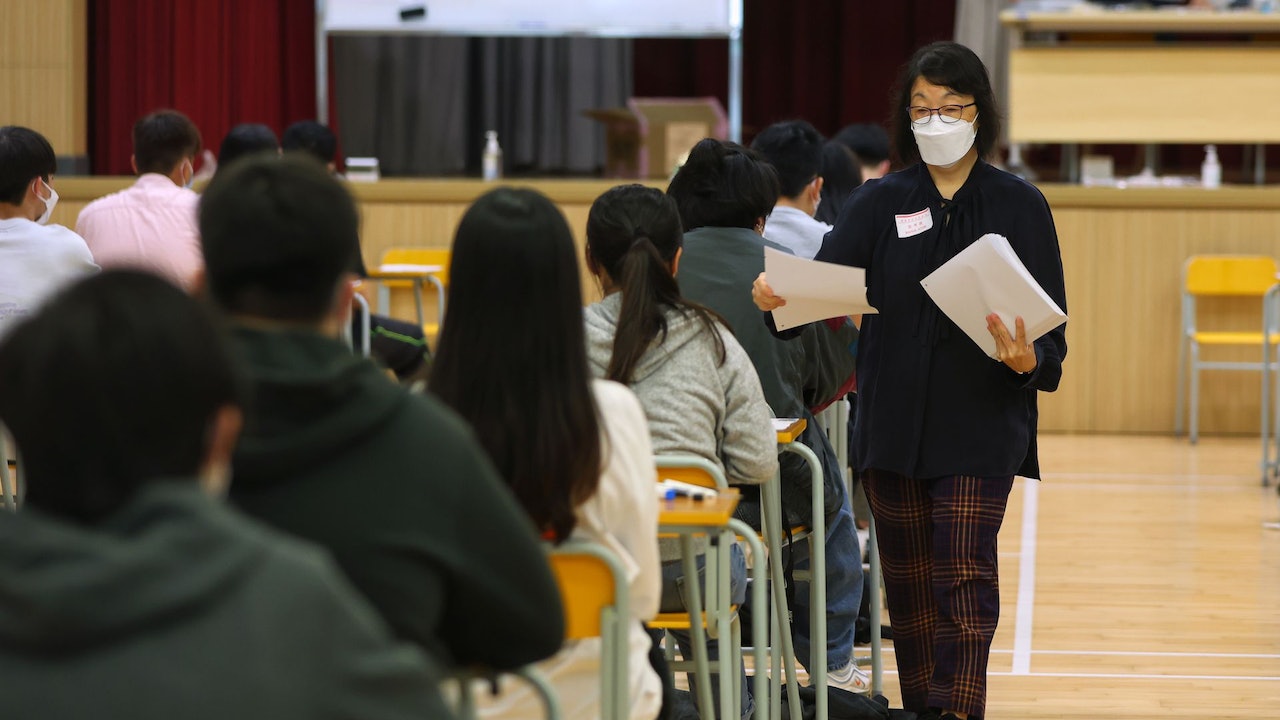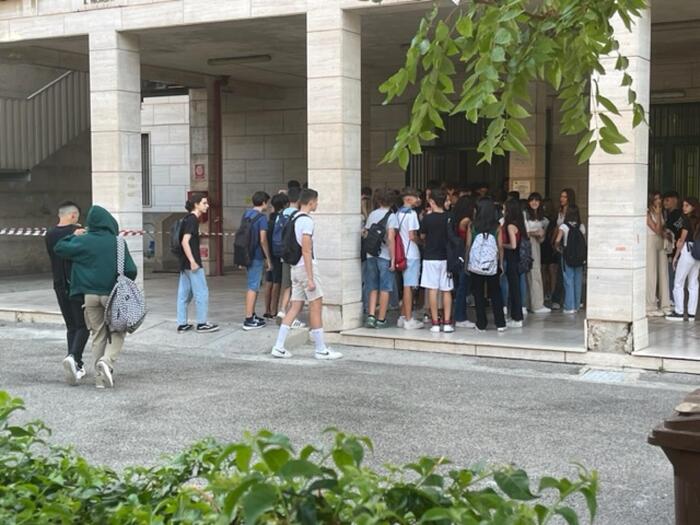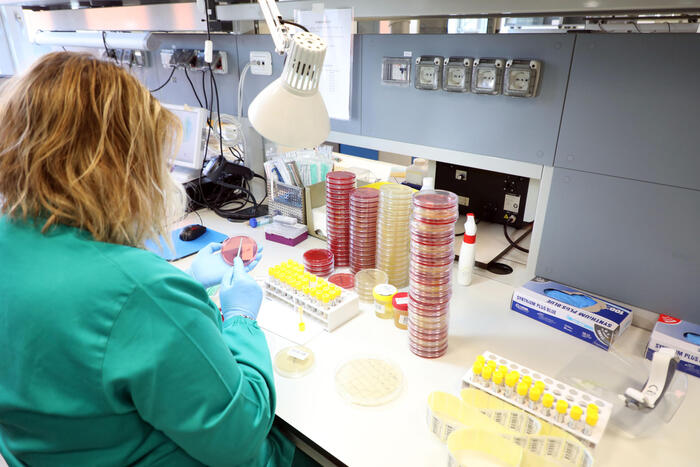The MWYO Youth Office released today (8th) the research report "The Way Out for Self-financing Institutions under the Decrease of Students", which found that the low birth rate led to the decrease of students. The basic forecast is that the number of secondary six students will hover between 42,000 and 45,000 in the next three years. Low levels, while self-financing sub-degrees offered by post-secondary institutions have been oversupplied, and admissions problems are becoming more and more serious.
MWYO suggested that self-financing institutions should relax restrictions on the admission of non-local students, further expand student sources, and increase funding for top-up bachelor's degree programmes to enhance the attractiveness of sub-degrees. Post-Secondary Education Enhancement and Start-Up Grant Scheme."
▼April 22 DSE Diploma Examination ▼
+11
The results of the Diploma of Secondary Education Examination were released last month. The number of candidates this year was about 50,000, a record low. Post-secondary institutions provided about 62,000 places, more than 10,000 more than the number of candidates. Competition for school admissions is more intense.
From the first HKDSE in 2012 to the 2021/22 school year, there has been an oversupply of self-financing sub-degrees offered by post-secondary institutions, and the admission problem has become increasingly serious.
Only 7 of the 24 self-financing institutions met expectations
The MWYO Youth Office conducted research on related issues and published a research report on "The Way Out for Self-financing Institutions under the Decreased Students" today (8th).
It was found that according to the data of the Education Bureau, among the institutions offering self-financing sub-degree and first-year bachelor's degree programmes in the 2021/22 academic year, most of the actual enrolment numbers fell short of expectations, and only 7 of the 24 institutions had The number of enrollees met expectations, and the actual number of enrollees in 11 rooms fell behind by about 20% or more (ranging from 19.4% to 91.4%).
The study predicts that the attrition rate of secondary six students in the next three years will increase slightly compared with the 2021/22 school year, while the number of secondary six students will drop by at least about 42,000 in the 2022/23 school year, and will only rebound to more than 45,000 in the 2024/25 school year, still lower than Figures for the 2019/20 school year.
Under the pessimistic forecast, the attrition rate of Secondary 6 students in the next three years will increase sharply compared with the 2021/22 school year and show no signs of abating.
The number of Secondary Six students decreased to about 41,000 in the 2022/23 school year, and slightly recovered to over 44,000 in the 2024/25 school year.
The proportion of secondary six students progressing to local sub-degrees has been declining, and they are more willing to study abroad
MWYO also analyzes the data on the way out of secondary school graduates according to the "Statistical Survey Report on the Exit of Secondary Six Students" published by the Education Bureau every year.
The proportion of Secondary 6 graduates who progress to a local sub-degree has been declining, from 39.9% in 2013 to 28.7% in 2021.
If the decline continues, MWYO estimates the number of local sub-degree students will remain low for four years, falling from over 11,000 in 2022 to about 10,000 in 2025.
In addition, the number of Secondary 6 graduates who choose to study in non-local institutions has remained at around 10% until 2019, but has surged to over 14% in 2020 and 2021.
MWYO estimates that the proportion and number of graduates from non-local institutions will continue to rise, from about 6,600 in 2022 to more than 8,000 in 2025, reducing the source of local admissions and putting more pressure on the overall admissions of local institutions , especially self-financing associate degrees.
The drop in the number of non-local students due to the epidemic may cause operating difficulties for self-financing institutions
Enrolment in self-financing institutions has been significantly affected by the decline in student numbers.
Among the nine institutions whose actual enrolment deviates from the expected enrolment by more than 20% in the data of the Education Bureau for the 2020/21 school year, most of them operate “Business and Management”, “Social Sciences”, “Services” and "Language"-related courses, and the number of students enrolled in individual institutions is six or less.
MWYO speculates that the cost of running these courses is lower, so there is a greater motivation to offer them; in addition, these subjects may have been more popular with students in the past, but in recent years, students have more choices due to the decrease in the number of students, so their response to these courses has turned cold.
In terms of enrolling non-local students, as of the 2019/20 school year, more and more non-local students were recruited, reaching a peak of more than 2,000 in that year, but the number of non-local students dropped sharply in the 2020/21 school year, which is estimated to be affected by the epidemic. Reduce the desire of students from the Mainland and other regions to study in Hong Kong.
The main source of income for self-financing institutions is tuition fees, and insufficient enrollment will lead to operational difficulties and the crisis of closure.
MWYO investigator Chen Langxuan said that the self-financing education market is saturated and even oversupplied.
(Photo by Ma Weijie/File photo)
Proposed relaxation of restrictions on admission of non-local students by self-financing institutions
Chen Langxuan, a researcher at the MWYO Youth Office, said that the market for self-financing education is saturated or even oversupplied, which is not conducive to the sustainable development of post-secondary education.
In view of this, MWYO supports several proposals recently proposed by the government to amend the Post-secondary Colleges Ordinance, including including all self-financing institutions in the unified regulatory framework of the Post-secondary Colleges Ordinance, and updating the conditions for the registration of institutions. In addition, it is also proposed to relax the restrictions on the admission of non-local students by self-financing institutions, further expand the source of students, and increase funding for top-up degree programmes, so as to enhance the attractiveness of sub-degrees, and at the same time, it can be further expanded and regularized The "Self-financing Post-secondary Education Enhancement and Start-up Grant Scheme" also encourages institutions to take into account the market needs of Hong Kong and the Greater Bay Area when offering new courses, so as to attract more non-local students to study.
Institutions in the two places can also jointly organize more exchange activities and internship programs.
The population of schoolchildren is falling. Councillor Deng Fei advocates the introduction of Southeast Asian and Mainland students to study DSE at full-fee self-financing in Hong Kong. The surplus 3 colleges admitted less than 100 students 20 self-financing colleges were less than expected Zhuhai College only accepted 66 students from Wollongong, VTC decreased by 700 students












/cloudfront-eu-central-1.images.arcpublishing.com/prisa/KMEYMJKESBAZBE4MRBAM4TGHIQ.jpg)


